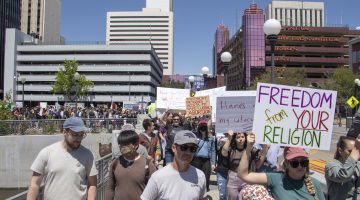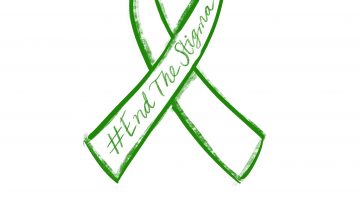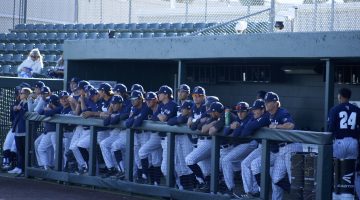
Dave Dravecky sat down with reporters at the Joe Crowley Student Union on Aug. 24. Dravecky went in depth about how he is coping with this loss of his left arm, his baseball identity and battling clinical depression.
By Neil Patrick Healy
There are two types of motivational speakers. Some tell their story of a rise from the ashes or of an overwhelming desire to succeed. The other isn’t quite as poetic. The second type has everything go wrong, but they find a way to move forward. Former major league left-handed pitcher Dave Dravecky is the second type of speaker. He spoke to a crowd of around 150 students at the Joe Crowley Student Union on August 24 about his devastating cancer diagnosis, the loss of his baseball identity, an ensuing battle with clinical depression and a struggle to put his life back together.
Dravecky was an All-Star pitcher with the San Diego Padres in 1983 and a key contributor to the San Francisco Giants playoff run in 1987. He was living his dream of playing professional baseball and was poised to have a big year with the Giants in 1988.
“I’m thinking that this year is going to be my year, but by September I noticed a small lump on the outside of my left arm and shoulder,” Dravecky said. “Before the season had started, all the tests were inconclusive, but by this time that lump was half the size of a golf ball. I went in for an MRI and when the results came back I was told I had a desmoid tumor with centers of fibrosarcoma.”
Doctors were aggressive, and after 10 and a half hours of surgery, they removed the tumor along with 50 percent of Dravecky’s deltoid muscle. He was given the news that outside of a miracle he would never pitch again, but Dravecky was determined to get back on the mound.
After the rehab regiment that Dravecky called the greatest prizefight of his life, he made his comeback on Aug. 10, 1989, with an eight-inning performance, beating the Cincinnati Reds 4-3.
Five days later, Dravecky was in Montreal set to pitch against the Expos. In a pregame meal with teammate Bob Knepper, Dravecky had a conversation that would allude to the next chapter in his story.
“I was talking about the miracle of my comeback and Knepper turns to me and says, ‘It’s not the miracle of the comeback that’s so important. It’s the miracle of salvation, and the day that your faith became real to you.’”
That miracle began when his comeback came to an end. In the sixth inning against the Expos, Dravecky threw his last pitch when the humerus bone in his arm snapped. Fans at the game said that the sound of the break could be heard throughout the stadium and Dravecky was seen rolling on the ground in pain.
“When I was on the ground, all I heard were Knepper’s words,” Dravecky said. “I thought to myself, ‘Oh my god. This is so much bigger than the game.’ I wouldn’t discover the meaning behind everything that had happened for a few years because the real pain and suffering was about to begin.”
Dravecky was forced to retire in 1989 after a second break in his arm and discovering that the cancer had returned. He later fought a staff infection for 10 months and doctors were forced to remove his left arm and shoulder in order to save his life. In the midst of losing his pitching arm, Dravecky welcomed the change.
“I figured with all my physical, emotional and spiritual problems, getting rid of my left arm and shoulder would get rid of all my problems,” Dravecky said. “My arm had become completely useless, so my wife and I handled the surgery really well and we were excited to move on.”
After the initial relief of not carrying his arm and the nuisance that came with it, the reality set in that Dravecky was never going to pitch again.
“As a pitcher, my left arm was my identity,” Dravecky said. “Now that it was gone, I began to have a real identity crisis.”
Dravecky’s life without his arm or his baseball identity had begun. He spoke at events as a motivational speaker, but Dravecky was not in the right place mentally.
“One moment I remember is when we were lying in bed and it was post-amputation,” said Jan, Dave Dravecky’s wife. “Dave was just frustrated with everything that was going on and he turned to me and said, ‘How can you love me? I’m only half a man.’”
This depression climaxed when Dravecky was giving a speech in Palm Beach, Florida in 1991.
“I was sitting in my hotel room and I was dreading having to speak,” Dravecky said. “Jan calls me, but I was angry and didn’t want to talk. She said to me, ‘you have two choices tonight for when you go out there to speak. You can be honest and tell everyone how you really feel or you can fake it.’”
That conversation was the moment that Dravecky knew that acceptance is the first step toward recovery. He explained the details of his trials and the resulting depression.
“Afterwards, 250 men were waiting to thank me for giving them permission to talk about their own struggles going on inside of them that they didn’t feel the freedom to talk about,” Dravecky said. “That moment was the beginning of an amazing journey forward.”
Both Dave and Jan Dravecky enrolled in 18 months of counseling for clinical depression and Dave had 12 more months for his anger.
“The healing process is still ebb and flow, but it got better with time,” Dravecky said. “There were good days and bad days, some struggles and a lot of growing up.”
Dravecky is now a published author, an ambassador for the San Francisco Giants and he travels to tell the story of his journey through life. He still struggles, but his new mindset has made his journey easier.
In a way, Bob Knepper was right. The miracle wasn’t Dravecky’s comeback, but his salvation. Everything went wrong, but he found a way to move forward.
Neil Patrick Healy can be reached at neil@sagebrush.unr.edu and on Twitter @NeilTheJuiceMan.









